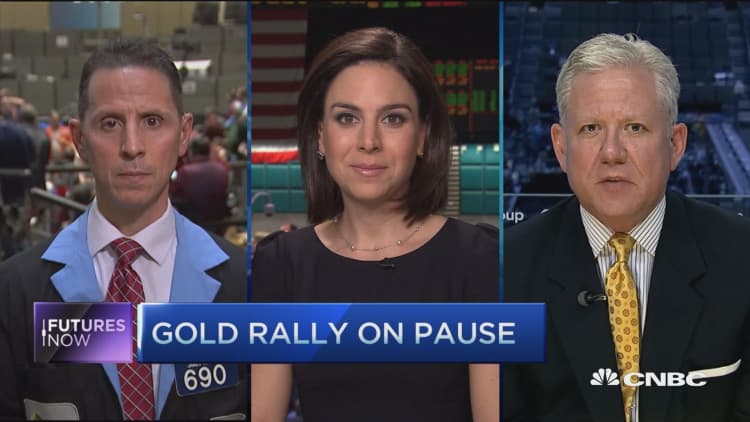


The gold market's reaction to the European Central Bank's bold stimulus package suggests interest rate cuts may not be enough to sway the price of the precious metal.
Gold prices fell immediately after the to slash interest rates further to record lows and ramp up bond purchases on Thursday. That reaction was somewhat surprising to analysts as the the cut in rates should have reduced the attractiveness of alternatives to gold, which doesn't pay any interest.
Prices did rebound later in the session but that was after the euro recovered against the U.S. dollar as ECB chief Mario Draghi indicated that further rate cuts are unlikely. Spot gold prices are up less than 1 percent around $1,280 an ounce in early Asian trade on Friday.
The move indicates other drivers may be exerting a greater influence on gold prices, according to Julian Jessop, head of commodities research at Capital Economics.
"It was not the response that many analysts seem to have been looking for, especially with the deposit rate being cut further into negative territory. A reduction in interest rates should be positive for the price of gold – other things being equal – as it lowers the opportunity cost of holding an asset that pays no income," Jessop said in a research note Thursday.
The initial lackluster response, he said, confirms that the main driver of the gold price is not interest rates, but swings in the greenback, the flow of safe-haven demand and shifts in inflation expectations, particularly expectations of a rebound in U.S. inflation.
"Interest rate cuts alone are not enough to boost the gold price, even if they take rates further below zero."
The initial fall in gold prices is explained instead by a stronger U.S. currency as the greenback jumped more than 1 percent against the euro and 3 percent surge in European equities, which signaled a reduced demand for safe havens.
Jessop noted that pinning the recent strength in gold prices to rate cuts wasn't a satisfactory explanation as policy rates have been negative in the euro zone since June 2014 and Denmark since June 2012. Switzerland's central bank also cut rates into negative territory last year while the Bank of Japan followed earlier this year.
Capital Economics is keeping its end-2016 gold price forecast at $1,350 per ounce.



